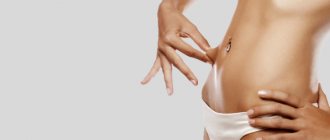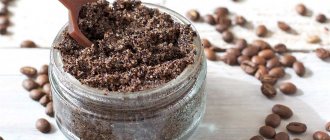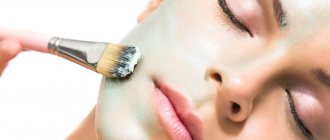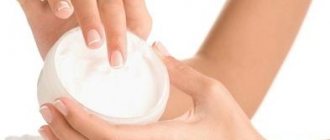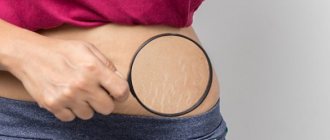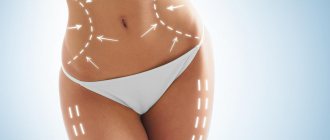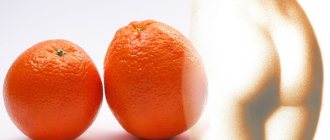Dermographism is a greatly increased sensitivity of the skin to external irritants. From the slightest touch or too much pressure on the skin, pronounced traces of impact remain on its surface, which can appear in the form of red or white stripes. The type of dermatological disease is determined by their color, and the patient is subsequently diagnosed with red or white dermographism. The exact cause of the disease is still not known. It is believed that this is a type of urticaria, the appearance of which may be associated with external or internal irritants of the body.
Varieties of dermographism
There are 4 types of dermographism:
- Urticarial dermographism , which is also called edematous, is characterized by the appearance of a blistering rash, similar to the features of urticaria. However, the rashes are not accompanied by itching and burning, so they can be ignored by a person for a long time.
- Red dermographism , characterized by the appearance of pink or red stripes on the surface of the skin after a blunt object is passed over them. Sometimes hyperemic areas of the epidermis may have white outlines. The stripes do not last long - only 2-3 hours, then they disappear on their own.
- White dermographism , in which white stripes appear on the body. They are stored for several minutes.
- Reflex dermographism , which occurs after passing a sharp object across the skin. The stripes are bright red and vary in length.
If a person’s health condition is normal, then doctors allow the development of red dermographism of the skin. The most severe (in terms of treatment) is the urticarial type of disease.
Symptoms
Symptoms of red dermographism
Based on the name of the disease, one can understand that the main clinical sign is the appearance of red spots on the skin. Normally, when you press on the skin, you can always notice some changes on it, namely, the area of the skin first turns pale, then turns red, and after a short period of time the color returns to normal.
However, some people report persistent redness or paleness of the skin. Such conditions are called red and white dermographism, respectively.
In the vast majority of cases, this pathology does not cause the appearance of other symptoms, but some patients note the presence of:
- severe skin itching in the area of redness, and constant scratching of such an area leads to the appearance of wounds;
- minor pain syndrome;
- rashes of unknown etiology;
- blisters.
However, the main symptoms are not external manifestations, but psychological discomfort. Quite a large number of people are embarrassed by the fact that they have such a pathology, which is why the prevalence of the disease among children, adolescents and adults is still not fully known.
Rashes and redness often persist from several hours to a couple of days, and then disappear on their own and without a trace, but provided that there is no influence of any factor.
It is worth noting that even with repeated manifestations, red dermographism does not lead to complications.
Which doctors should you visit?
All forms of dermographism are treated by a dermatologist.
- Gastroenterologist - to exclude gastritis, dysbacteriosis, colitis. If the patient has constipation, you need to find out the cause.
- Parasitologist. It is necessary to exclude infection with worms, protozoa, lamblia, and opisthorchiasis.
- Endocrinologist. Rule out diabetes (donate blood for sugar), check the functioning of the thyroid gland (blood for hormones).
- Immunologist - to determine the general condition of the immune system. If necessary, take a course of immunomodulators.
Additional research by specialists in different fields of medicine will help differentiate the causes of red dermographism and pathologies of other internal organs.
Causes of dermographism
Persistent red dermographism, accompanied by skin hyperemia, as in atopic dermatitis, is not dangerous to humans. Redness of the epidermis that occurs in response to mechanical damage is an absolutely normal phenomenon, unless it is accompanied by itching, burning and peeling.
The reasons for this deviation lie in the abnormal activity of the parasympathetic division of the ANS, and may be associated with a disturbance in the metabolic process caused, for example, by thyrotoxicosis.
The causes of white dermographism are vasospasm. This type of reaction can occur in any person, but people suffering from hypertonicity of the sympathetic division of the ANS are most susceptible to it.
Edematous dermographism develops against the background of allergic reactions, when tissue swelling occurs when allergens penetrate through the membranes of mast skin cells.
Factors predisposing to the development of white, edematous, reflex and red dermographism are:
- nervous tension, stress;
- chronic diseases of the nervous system;
- alcoholism;
- long-term exposure to chemical elements on the body;
- frequent cases of hypothermia.
Red dermographism may not be an independent disease, but one of the signs of pathologies of the nervous system, and even meningitis. For this reason, the diagnosis and treatment of the disease should be carried out exclusively by a doctor.
Etiology
Red dermographism is nothing more than a reaction of the skin to thermal, mechanical and other external influences, against the background of which red marks appear on the skin that persist for quite a long period of time.
The reasons for the development of pathology remain not fully understood, however, among the predisposing factors are:
- prolonged exposure to low or high temperatures;
- friction of the skin against tight clothing;
- shocks and other impacts;
- exposure to stress and nervous strain;
- genetic predisposition;
- the course of allergic processes.
In addition, it is generally accepted that the development of such a disease is influenced by the state of the gastrointestinal tract, which is why the sources of the disease can be considered:
- chronic constipation;
- dysbacteriosis;
- gastritis of any nature;
- pathological influence of helminths, lamblia and other protozoa;
- disruption of the functioning of the thyroid gland, which often happens when it is partially removed;
- Gluten intolerance.
Prevalence
Collecting information about how much humanity suffers from this condition is complicated by the fact that not everyone notices something unusual in the reaction of their skin, and even fewer people consider it necessary to contact doctors if abnormalities are detected. In this regard, data on how common red dermographism is is difficult to call sufficiently accurate. Researchers talk about 2-5%, but in reality the percentage is most likely higher.
Red dermographism in children occurs quite often at an early age. It can be quite intense and diffuse, but is mainly due to the fact that their skin is more delicate and sensitive and at the same time prone to irritation. However, children are more often diagnosed with other skin diseases (for example, urticaria or dermatitis), rather than red dermographism.
Diagnostics
Diagnosing dermographism is much easier than any other skin disease. To record the fact of a sharp reaction of the epidermis to mechanical stress, it is enough for the doctor to run a medical spatula over it.
If small vesicles have formed on the surface of the skin, the dermatologist can additionally scrape their tissues for serological testing. This is a differential diagnostic method, which is carried out in order to distinguish dermographism from other diseases accompanied by the formation of watery blisters.
Diet therapy
The selection of nutrition for each patient is individual and should be carried out by a nutritionist. Although there are general rules, for example, you should avoid eating spicy and fatty foods, smoked and salty foods, and do not abuse spices, alcohol and carbonated drinks. To enrich your diet, you should include more greens, vegetables, and fresh fruits.
Folk remedies are also suitable for eliminating the causes and treating red dermographism (see photo below). The most effective were: raw potatoes, nettles and raspberry roots; olive oil; sage and string; valerian and celandine; St. John's wort and chamomile. Decoctions are prepared from herbs, roots and leaves, which are taken orally or used as lotions (especially potatoes).
Treatment with folk remedies
To treat red dermographism, especially its mild form, you do not need to use specific techniques. It will be enough to use traditional medicine products, in this case they can provide significant help. Below are recommendations from healers for combating dermographic urticaria.
Morning tea and coffee for patients with urticarial dermographism should be replaced with a decoction of the series. The herb is brewed like regular tea. You can drink the decoction throughout the day, and not just in the morning. In addition to the series, teas brewed with black currant and garden raspberry leaves, rose hips, mint and yarrow are suitable for such patients.
Fresh celery juice will help get rid of the symptoms of dermographic urticaria. You can prepare it using a juicer, or simply grate the root on a fine grater and squeeze through cheesecloth. To achieve maximum effect, you should drink at least 1/3 glass of this juice per day. You can also make vegetable cocktails by adding carrot, cucumber or beet juice to celery.
Features of the treatment of dermographism
Treatment of a disease such as dermographism should be carried out under the supervision of a physician. But the therapy used will not help to completely cure the pathology if its causes have not been established. And since this is exactly what happens in the vast majority of cases, the attending physician can prescribe medications that will only temporarily remove the unpleasant symptoms.
Drug treatment involves the use of:
- antibiotics (rare);
- antiseptics;
- antiallergic (antihistamine) drugs;
- hypertonic or hypotonic drugs.
Only a doctor should treat dermographism with pharmaceutical medications, since it is almost impossible to choose a suitable remedy on your own. More precisely, this should not be done so as not to cause a more aggressive reaction of the body.
Oral administration of medications (except antihistamines) in the fight against dermographism is inappropriate. In this situation, only topical products (ointments, creams, gels) can help.
Therapy
In mild cases (90%), there is no need to treat such a disorder. Marks on the skin disappear on their own after some time and do not leave scars. To relieve symptoms, take sedative antihistamines of the 1st generation: suprastin, diphenhydramine.
But in severe chronic forms, non-sedating antihistamines of the 2nd generation (loratadine) or 3rd generation (cetirizine) are prescribed. They are taken once when manifestations occur or regularly for persistent relapses. For prevention, ketotifen is prescribed; it prevents histamine from entering the tissue.
Prevention measures
To avoid the development of dermographism, it is necessary:
- wear comfortable clothes made from natural fabrics;
- try to rub your skin with a washcloth as little as possible while taking a shower or bath;
- use hypoallergenic hygiene products;
- do not overcool and do not overheat;
- keep your skin clean;
- walk outdoors more often.
To restore the skin after an illness, it is necessary to enrich the menu with products containing vitamins. In particular, the body needs vitamin C, which activates the immune system, giving it the strength to fight pathological processes.
Drinking fluids (adults - 2 liters per day, preschool children - 1 liter) restores the structure of skin tissue and moisturizes the epidermis.
Proper skin care significantly reduces the risk of developing dermographism and other dermatological diseases. That is why the rules of child hygiene must be taught from early childhood.
There are no similar articles.
Did you like the article?
What is urticaria?
This is a dermatological disease caused by a certain irritant, which is accompanied by the following symptoms: the skin turns red and swells, blisters 0.1-1.0 cm in size appear on it. The lesions resemble nettle burns, they bother the patient: they hurt, burn, itch.
Urticaria is a common disease. In children it is more often acute, while adults suffer from a chronic form.
There are 2 ways of developing pathology:
- Immune. Ordinary substances upon first contact with the body, due to improper functioning of the immune system, are perceived by it as hostile - it begins to produce antibodies. Upon repeated contact, the antibodies begin to fight the irritant, causing harm to the person himself - characteristic allergy symptoms appear.
- Non-immune. Antigens (for example, antibiotics) in this case do not require repeated contact, they will immediately provoke antibodies to attach to mast cells and release histamine.
Types of pathology
There are several types depending on the factor that provokes the reaction. Types of urticaria
| View | Provocateur of reaction |
| cold | low temperatures |
| solar | ultraviolet radiation: sun, solarium |
| thermal | heated object |
| cholinergic | overheating of the body, heavy physical activity, stress |
| aquagenic | water |
| contact | natural fabrics, wool and particles of animal epidermis, some plants, cosmetics, topical medications |
| medicinal | medications, in particular antidepressants, non-steroidal anti-inflammatory drugs, acetylsalicylic acid, antibiotics |
| food | products |
| dermographic | mechanical effect on the skin |
| idiopathic | unknown origin: the irritant can be cold, heat, stress, medications, foods |
Removal of scars after dermographism
An infusion of nettle with lemon juice will help remove scars and unbearable itching caused by mechanical stress on the skin during urticarial dermographism.
Fresh licorice root has proven effective in treating dermographic urticaria. The root is washed, peeled, and divided into small pieces. Take licorice root twice a day, chewing thoroughly and drinking plenty of water.
To cleanse and soothe the skin with urticarial dermographism, taking baths using marjoram infusion is useful. The infusion is prepared as follows: 200 grams of herb are poured with 2 liters of boiling water and infused for an hour. Then a bath is drawn (the water temperature should be approximately 37 degrees), and the strained infusion is added. The duration of the procedure is approximately 10 minutes.
Possible complications
If dermographism is accompanied by severe itching, then when scratching the areas of the epidermis affected by rashes, there is a high risk of bacterial or viral infection. This could be herpes, human papillomavirus, streptococcal or staphylococcal microflora, etc.
If you do not pay attention to the manifestations of dermographism, this can lead to the development of complications. These include:
- exhaustion of the nervous system;
- damage and thinning of the dermis;
- the introduction of infection and the development of inflammatory processes in places where skin rashes and blisters occur;
- Quincke's edema, anaphylactic shock (in rare cases).
Symptoms of stretch marks
Striae are easy to detect visually. These are wavy narrow stripes that are noticeable on the surface of the skin of the abdomen, thighs and other places. Coloring may vary:
- white;
- bluish;
- pinkish.
Stretch marks change color from reddish to purple over time. By this sign, you can determine the oldness of striae. Also, the skin in the affected areas becomes flabby - this is another clear sign of stretch marks.
As a rule, pathologies associated with striae are accompanied by other symptoms, including hair growth in uncharacteristic places - mustaches, beards in women. Upper type obesity may also develop and blood pressure may increase. These are quite dangerous conditions that cannot be treated on their own - you need to see a doctor and undergo a series of examinations.
General characteristics of the disease
Direct determination of dermographism as a diagnosis is not difficult - this is easily done by pronounced characteristic manifestations on the skin during a visual examination and testing the skin for mechanical impact. However, this dermatological pathology is rarely an independent disease - most often it is one of the symptoms of the underlying disease.
Diseases that cause dermographism pose a particular danger to a child. They can lead to the development of the following negative consequences:
- damage to various internal organs;
- decreased motor ability;
- changes in hormone levels;
- metabolic disorders at the cellular level;
- change in blood formula;
- disability, asphyxia, death.
Therefore, when the first signs of dermographism appear in children, you should immediately contact your pediatrician. Self-medication is strictly forbidden. Only qualified medical care can provide quality treatment and prevent the development of complications.
The term “dermography” comes from the words derma - skin and grapho - write. Translated from Greek, it means “skin writing” or “skin writing.” In a person suffering from dermographism, the skin is indeed constantly “painted” with various symbols, similar to mysterious inscriptions. They are formed even from minor exposure to seams on clothing, folds of bed linen, or touching with a blunt object. These can be stripes of different sizes and shapes, characterized by slight swelling and redness or paleness of the skin.
With dermographic urticaria, the pressure mark is distinguished not only by a more pronounced change in color, but also by swelling of the skin with itchy rashes on it. Such symptoms persist for several hours or days.
Therefore, when the first signs of dermographism appear in children, you should immediately contact your pediatrician. Self-medication is strictly forbidden. Only qualified medical care can provide quality treatment and prevent the development of complications. Before treating dermographism, a child or adult patient first undergoes a differential examination to identify or exclude the most likely diseases:
- exhaustion, disorder or intoxication damage to the nervous system;
- psoriasis, other dermatoses;
- vegetoneurosis, vegetative-vascular dystonia;
- hyperthyroidism;
- meningitis, disorders of the central nervous system;
- disturbances of sympathetic innervation;
- parasitic infestations;
- increased swelling;
- exposure to allergens;
- hormonal imbalances;
- metabolic disorders;
- autoimmune, cardiovascular pathologies;
- infectious processes in the body;
- hereditary predisposition.
To identify the cause of dermographism, the following are prescribed:
- laboratory tests of blood and feces for the presence of parasites;
- blood test for hormone levels;
- encephalogram of the brain to establish the functionality of the central nervous system;
- immunogram to check the state of the immune system;
- allergy tests;
- Ultrasound of internal organs,
- tomography, x-ray;
- biopsy.
Based on the results of diagnostic studies, the root cause of skin hypersensitivity is determined and a course of treatment is prescribed.
How to treat young and old stretch marks on the back?
Striae are atrophic scars. They do not rise above the skin, but are located below its level. Over time, such scars may become less noticeable, but will not disappear on their own. If the formation of stretch marks was noticed at the initial stage, when they are bright red and small, then you can use cosmetics and folk methods.
How to remove stretch marks from your back with cosmetic procedures
This is an effective, but quite expensive way to get rid of stretch marks. Beauty salons and specialized clinics can offer several types of procedures that affect the surface layer of the skin and remove rough epidermal cells. Most manipulations have contraindications, so consultation with a doctor before starting a course of procedures is mandatory . The most popular methods of combating stretch marks on the back are:
- Laser resurfacing - carried out under local anesthesia, destroys the top layer of the skin, makes even old stretch marks minimally noticeable, results will appear in 30 days.
- microneedling - piercing the skin with a large number of miniature needles stimulates collagen synthesis, a decrease in the severity of stretch marks is noted after the third procedure. This method combines very well with preparations containing enzymes.
- microdermabrasion - aimed at the synthesis of new epidermal cells, especially effective against young stretch marks, carried out using creams and ointments that improve regeneration and metabolic processes. A rather painful procedure during which the stratum corneum of the skin is injured.
- deep peeling – the upper layer of the dermis is “burned” by acids, then new cells begin to appear, the severity of stretch marks becomes less obvious.
Cosmetic procedures make even stretch marks that appeared more than 12 months ago less noticeable. But, as we said earlier, each method has contraindications, so consultation with a doctor is mandatory, especially during pregnancy and lactation. A detailed medical history is 90% successful, so do not withhold information about chronic diseases and taking pills. It would also be useful to consult an endocrinologist. If cosmetic procedures are contraindicated, then you can use home remedies. They are often no less effective and, when used regularly, give very good results.
Treatment of stretch marks on the back - what to do on your own?
One of the effective home methods to combat stretch marks is body wraps. This procedure can also be offered in a beauty salon or clinic, but it is simple, does not require specific knowledge and can be performed independently. Before starting the procedures, you must undergo a standard examination by a doctor and exclude contraindications to components in cosmetic products. This method of correcting stretch marks cannot be used in the presence of dermatological diseases of fungal and infectious origin with symptoms on the back. Also a limitation is any deviation in the functioning of the cardiovascular system. Wrapping steps:
- Take a warm shower.
- Apply the selected product to the back, cover with cling film in several layers on top.
- Wear tight, dense clothes.
- Lie on your stomach and cover yourself with a blanket.
- After 30 minutes, rinse everything off under a warm shower.
Also, to get rid of stretch marks on the back, experts recommend playing sports. Physical activity should be moderate and aimed at strengthening muscles. The best choice would be swimming, because the water will have a gentle massage effect on the stretch marks. Morning and evening jogging or walking on a treadmill, as well as yoga or Pilates, would be useful.
What can be done with folk remedies for stretch marks on the back?
Recipes from the category of “traditional medicine” are considered ineffective in the fight against stretch marks - the effect on the injured dermis is minimal, and it will take several months to obtain visible results. Folk remedies against stretch marks include scrubs and creams made from natural ingredients. You need to remember the high probability of developing allergies and exclude such reactions of the body to individual ingredients. What you can use:
- Natural coffee beans. Grind them (100–200 g) and mix with shower gel to a paste. Apply the mixture to the stretch marks, rubbing your hand into the skin, leave for 5 minutes and rinse with warm water. You can use this method 1-2 times a week.
- Natural candied honey. Take a small amount of product and apply an even, thick layer to your back. Leave for 10-20 minutes, then remove excess with a damp cloth. The procedure is performed every day for 6 months.
- Aloe. You will need the juiciest leaves of the plant, which need to be cut and crushed until a large amount of juice appears. Apply the mass to stretch marks and leave for 10–15 minutes, after which it is washed off with warm water. The course lasts 4 months, manipulation should be performed every day.
In parallel with folk remedies, you can resort to the services of a massage therapist; vacuum massage with special cans works especially well. During the massage, it is recommended to use natural oils that will moisturize the epidermis (grape seed or olive). A combination of massage and sports will be effective, but only against fresh stretch marks. In case of old defects, these methods will not bring the desired result.
Drugs from the pharmacy
Doctors recommend taking vitamin complexes to combat stretch marks. They improve the production of collagen by skin cells, strengthen the overall immune system, and accelerate regeneration processes. A number of ointments and creams that directly affect problem areas of the skin will also be effective. What you can use:
- Contractubex – the main active ingredients are sodium heparin and allantoin, has a pronounced healing effect, is applied in a thin layer;
- Heparin ointment - can cause allergies; it contains heparin, applied in a thin layer to the stretch marks using a cotton swab;
- Badyaga is a product of animal origin, it is a dried and crushed freshwater sponge, it has a scrubbing effect, due to which the skin is renewed.
- Reparef - accelerates regeneration, is available in the form of an ointment, applied in a thin layer and left until completely absorbed.
The Fermenkol Elactin set has proven its effectiveness against stretch marks on the back ; it acts only on damaged areas of the skin, promotes cell renewal by 90%, makes even old stretch marks less noticeable, and almost completely eliminates fresh stretch marks. Fermenkol contains a special collagenase enzyme, which breaks down deformed collagen fibers (the main component of stretch marks) into individual amino acids and uses them as building material for a healthy skin framework. Fermenkol can be used at any age and even during pregnancy and breastfeeding . In addition to eliminating stretch marks, you can get additional effects - evening out the tone of the epidermis, increasing the elasticity/firmness of the skin. The first results on fresh stretch marks are noticeable after 2 weeks of use.

